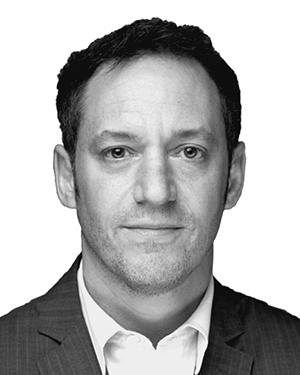As the world adapts to changes brought about by the COVID-19 pandemic, the commercial real estate market is evolving to capitalize on these more recent trends. After spending the past few years focusing on the “last mile,” for example, investors in logistics assets are now pursuing the “next mile”—properties such as refrigerated grocery pick-up stations and future landing pads for driverless cars. Among those trying to be on the front lines of this strategy is C.J. Follini, family office principal and investment fund manager with Noyack Capital Partners (NCP), who is on a mission to future-proof his firm’s alternative real estate investments.
As a manager of a logistics assets portfolio, Follini and his team have developed proprietary analytics for identifying a new property type they call “mobility hubs.” This market analytics methodology has enabled NCP to identify “next mile” investment targets to meet future alternative logistics real estate demand, including mobility hubs, specialized cold storage facilities and medical/life sciences assets.
NCP, which also oversees a multifamily portfolio of more than $1 billion in assets, serves the needs of accredited family offices and other private capital sources.
WMRE talked with Follini about the recent trends shaping the logistics real estate sector, including self-driving cars and crypto currency, the emerging mobility hub asset class, and NCP’s market analytics methodology for identifying new opportunities in its real estate investment strategy.
This Q&A has been edited for length, style and clarity.
WMRE: How much money does Noyack Capital Partners have available to deploy right now?
 C.J. Follini: Noyack Capital Partners has just filed our PPM (private placement memorandum) to launch Noyack Logistics Income Trust, a private non-traded REIT. We have just started fundraising, so while the number is evolving, today we have approximately $20 million to deploy at this stage in the process. Ultimately, we expect to deploy a multiple of that number.
C.J. Follini: Noyack Capital Partners has just filed our PPM (private placement memorandum) to launch Noyack Logistics Income Trust, a private non-traded REIT. We have just started fundraising, so while the number is evolving, today we have approximately $20 million to deploy at this stage in the process. Ultimately, we expect to deploy a multiple of that number.
In addition to pure capital, we also are contributing roughly $30 million of our own assets to seed the offering with cash-flowing properties from day one.
WMRE: What is your typical investor profile?
C.J. Follini: Our Noyack Logistics offering is yield-driven, targeting a 6 percent preferred return, and low volatility, based on its focus on diversified logistics infrastructure. So, our typical investor is a family office, registered investment advisor (RIA) or individual accredited investor interested in attractive risk-adjusted yield and wealth preservation. We also see Noyack Logistics as relevant for Roth IRAs and 401Ks.
WMRE: So, in addition to family offices, you work with other types of investors? What other types of investors are you pursuing right now?
C.J. Follini: Family offices are the primary focus for Noyack Logistics, but we also see bundler RIAs and athlete/celebrity business managers as relevant to the effort. We are also the first private security governed by Regulation D we are aware of that accepts crypto currency, which we think will appeal to a growing subset of private investors.
WMRE: How did you find or connect with existing investors? What methods have you used to find new investors in recent years, particularly during the pandemic?
C.J. Follini: First, we are mining our very extensive family office network. That is where the benefit of our long-standing relationships is most meaningful. We are also directly targeting RIAs and business managers we’ve identified internally for direct outreach. Then granular email outreach to new, similar cohorts will follow. I am frequently asked to speak at conferences, and we find this is a great entry point for new relationship development.
WMRE: What types of returns does your firm promise investors and for how long will you hold assets?
C.J. Follini: Noyack Logistics will target a 6 percent preferred return over five to seven years.
WMRE: How do you currently communicate with investors? Has your approach to communicating with investors changed over the years, and if so, in what ways?
C.J. Follini: We believe in a combination of radical transparency coupled with robust in-person communication. That is a time-tested approach for Noyack. We are now supported with proprietary software that integrates investment management functions with our operational and fiduciary responsibilities. This integration will create additional transparency for our investors.
WMRE: Your firm was launched in the mid-2000s. How did family offices’ approach to commercial real estate investment change over tiem? What were they looking for back then, and what are they looking for now?
C.J. Follini: Our firm’s first incarnation was actually the launch of a single-family office for my family in 1988. We then became a multi-family office with discretionary capital in 2005.
In terms of how we approach investing, actually not much has changed for us at all. We have always sought "white space" asset classes, i.e. parking, healthcare, covered land, industrial and entertainment venues while they were still fragmented, leading to attractive pricing. Then we would harvest the assets when less innovative asset managers followed our lead and drove down cap rates. This strategy has served us well and will remain our focus.
WMRE: How do you typically structure investments, in terms of how much of your firm's own money goes into them, how much is investor money, how much do you leverage deals?
C.J. Follini: Noyack’s principals believe in total alignment of interests, which is why we are investing an estimated $30 million of our principal-owned life science and parking assets into the fund. This is creating near-term dividend, so Noyack Logistic doesn’t start as a blind pool, which we don’t believe in. We also have developed the Noyack Logistics’ TripleZero fee structure as one of the lowest in the REIT industry. Investors are expected to receive 100 percent of invested capital and a 15 percent IRR before we, as a manager, earn any incentive bonus from profits.
WMRE: What are the most attractive alternative real estate investments right now, and what makes them popular with investors?
C.J. Follini: Without a doubt, cold storage industrial is one of the current market’s most attractive asset classes. We see smaller, closer, colder as the unique characteristics we will target as we pursue investments in this asset class. Its attractiveness lies in its fundamentals: cold storage demand far outstrips supply; it has major barriers to entry; it requires specialized management expertise, which is its moat; and finally, pricing is very inelastic.
WMRE: What types of returns is your firm looking for?
C.J. Follini: Noyack Logistics, as planned, is set to achieve a look-back IRR of 18 to 20 percent.
WMRE: Can you explain how your proprietary method for identifying attractive investment opportunities which may be overlooked by others, works? What does that method involve? Where are you finding such properties, and what do they look like?
C.J. Follini: We are unique in that we are an extremely data-centric firm. For example, we have spent the past year building two robust algorithms that are powered with artificial intelligence APIs (Application Programming Interface). These algorithms tap into over 40 discrete data points to score individual deals and markets relative to disparate alternatives. It is essentially a way for us to compare apples to oranges and come out with real inputs for investment decision-making.
WMRE: Can you explain the “mobility hub” concept? What does that encompass? What kinds of returns are you expecting for this type of property?
C.J. Follini: The conventional definition of a mobility hub is: "Mobility Hubs are places that connect several different types of transportation to make your ride easier and more convenient." We wish to alter this definition by repurposing large parking garages, which are grossly underutilized real estate, into nano-distribution centers in any neighborhood, in any city to support efficient logistical infrastructure and distribution. These mobility hubs connect goods, services, technology, people and transportation in ways that respond to the pace of life and consumer demands. Think of climate-controlled facilities to support a city's grocery stores and their neighborhood delivery programs, or a place when EV driverless vehicles return to each day, or establishing cloud kitchens for food service with easy delivery. These are all meaningful value creators that represent a logical evolution for today’s urban parking and other logistics facilities.
WMRE: How much money has your firm deployed recently toward these types of acquisitions? Can you give examples of some recent deals and what is your plan for the purchased properties?
C. J. Follini: As a family office, we have deployed into life science, healthcare delivery and mobility hubs. As an alternative investment platform via Noyack Logistics, we haven’t commenced deployment yet, since we are still in fundraising mode. However, we are contributing roughly $30 million of our own mobility hub and life science assets to seed the offering with cash-flowing properties.





